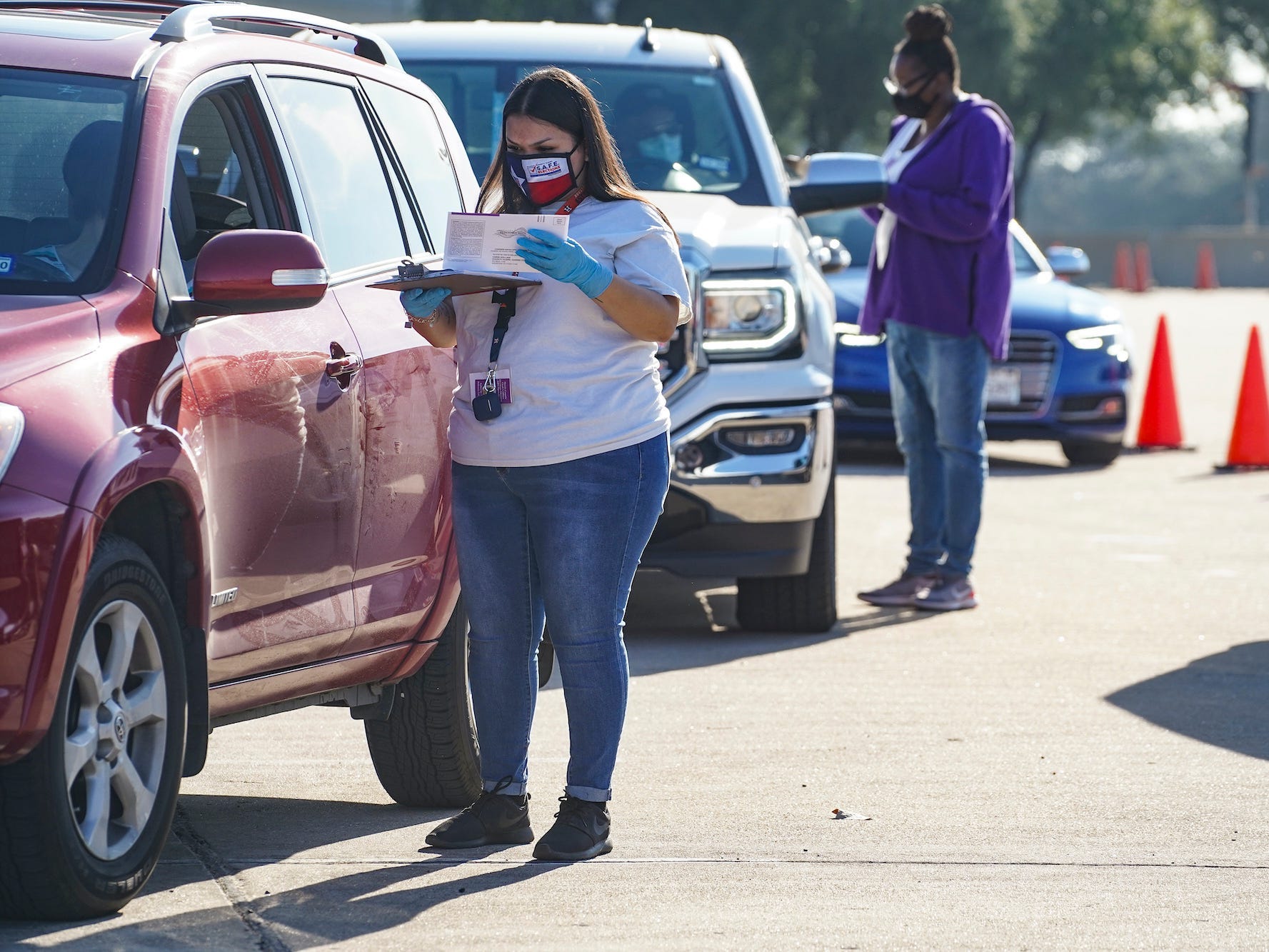
Go Nakamura/Getty Images
- Texas’ demographics have been changing rapidly, and it could mean a seismic shift in the US presidential electoral map.
- According to The New York Times, early voters in Texas just surpassed the total number of voters in the 2016 election.
- More Americans are moving to the Lone Star State because of its low cost of living and other attractive features.
- Migration to Texas could affect who will win the state’s 38 electoral votes and the election.
- Visit Business Insider’s homepage for more stories.
Although President Donald Trump won Texas’ 38 electoral votes in the 2016 election, a changing and growing population in the state could affect who will win the Lone Star State this time around.
Demographic changes, including an influx of migrants from other states, could be helping to fuel a shift in Texas’ political picture, which could have massive implications for elections for years to come.
The number of early voters in Texas just surpassed the total number of people who voted in 2016, according to The New York Times, making Texas the second state to pass its 2016 turnout, along with Hawaii. Around 9 million people in Texas voted early amid the pandemic, more than the nearly 8.97 million Texans in total who voted during the last election.
This is in part due to a large number of young residents voting: The Los Angeles Times reports the number of voters under 30 in the state is about three times the number in 2016.
Texas is one of the important battleground states, with the second-highest number of electoral votes after California. For decades, Texas has been reliably red in presidential races — the last time the state voted for a Democratic presidential candidate was for Jimmy Carter in 1976. But this year, the state appears within reach of former Vice President Joe Biden, who trails Trump by only 2.3 percentage points, according to RealClearPolitics.
A large amount of migration from other parts of the US may be contributing to the state becoming more Democratic. For instance, some Texas cities, like Houston, are seeing a net migration of more millenials. As the Pew Research Center notes, a larger share of voters in this generation are Democrats or Democratic-leaning than Republicans or Republican-leaning.
The state has had a big increase in people moving into the state over the decade. Per an analysis by the Census Bureau, six of the 10 US counties with the largest population gains from 2010 to 2019 were in Texas, including Dallas County which has voted Democratic in the last three presidential elections.
Some of these movers are from Democratic-leaning states. According to to a bit of triumphant-sounding data from the Texas Realtors' association reported by Dallas News, there were 36% more moves from reliably-blue California to Texas in 2018 compared to 2017. 86,164 Californians moved to Texas in 2018 per the report, the largest number from any state in the Texas Realtors' analysis. The article also notes many new residents were from the Los Angeles, New York, and Chicago metropolitan areas, all traditionally Democratic bastions. Of course, it's worth pointing out that while these are all heavily blue-leaning areas, there's no way to know for sure how the recent transplants intend to vote.
The longer-term trend of Americans moving to Texas appears to be continuing amid the pandemic. According to US Postal Service change-of-address data between February and July, six cities out of the 10 that saw the largest gains were in Texas, such as Richmond. However, it is important to note that some of these moves may be temporary, with people planning to return to their original homes after the pandemic.
According to Pew Trusts' analysis, Texas' changing demographics, especially in the suburbs, could be seen in gains for the Democrats in the 2018 election. Despite keeping a Republican majority, "Democrats gained two seats in the state Senate and 12 seats in the House in key suburban districts."
But it is too early to tell what the outcome of Texas will be. According to FiveThirtyEight, Trump has a 66 in 100 chance of winning, while Biden has a 34 in 100 chance as of the latest update, and according to RealClearPolitics current average, Trump is leading by 2.3 percentage points.

